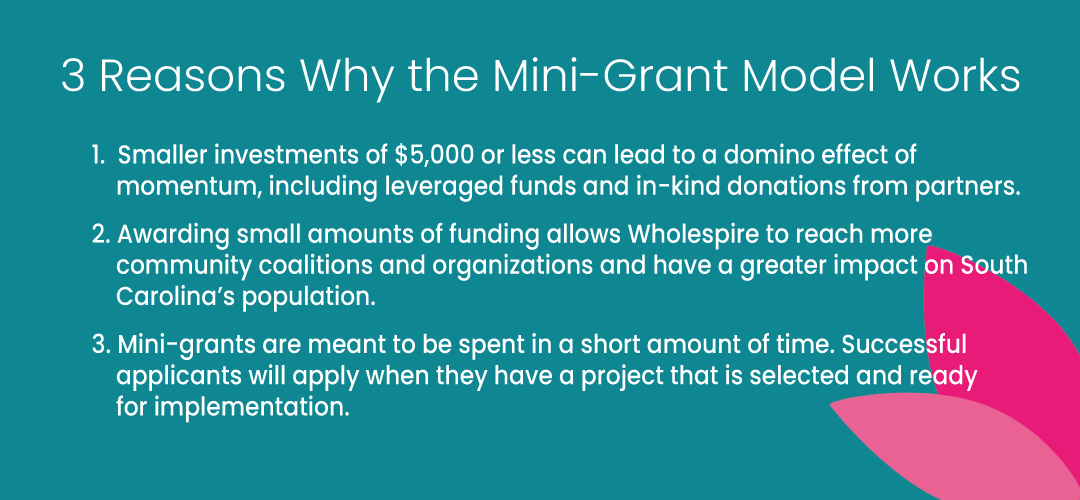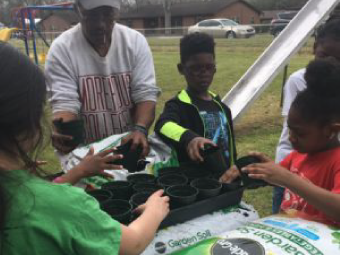Depending on how long you’ve been keeping up with Wholespire, you may be aware that we award mini-grants to community coalitions and organizations periodically. Our application process is competitive, meaning we weigh various health outcomes, population, and demographic data to help determine the most need. However, what you may not know is why we offer mini-grants, rather than large chunks of money. In this post, we’ll explain the history of our mini-grants and the reason we use this model.
What is the Mini-Grant Model?
Mini-grants are grant awards that are relatively small amounts of money and typically have short implementation periods.
Since 2018, Wholespire has been offering mini-grants of up to $5,000 to community coalitions, schools, local government, faith-based groups, and other non-profit organizations. These mini-grants can be used to implement a policy, systems, or environmental change that addresses healthy eating and/or active living. To date, 45 mini-grants have been awarded for projects like:
- Add signage to an existing walking loop,
- Add fitness stations to parks,
- Create community gardens,
- Include bilingual signage at farmers’ markets, and
- Start new HYPE teams to lead civic action projects similar to the ones just listed.
Why Wholespire Adopted the Mini-Grant Model
Before 2018, Wholespire awarded large grants with a longer implementation period to help a small number of communities work on multiple improvement projects. Our hope was there would be a greater health impact. But that didn’t happen with all of the communities we funded.
Some communities experienced challenges, while others didn’t. Receiving a large amount of money can be overwhelming. It isn’t always easy to choose how to spend the money and what areas to tackle first. Sometimes it’s difficult to reach a consensus, while other times, you get so bogged down in a couple of strategies that the other strategies and the money get lost.
After evaluating these instances, Wholespire noticed that even when coalitions have large amounts of grant funding, they tend to spend their money in smaller increments like $5-$10,000 rather than spending large amounts of money at one time. We concluded that change needed to happen. We needed to look internally and adopt a different approach to grantmaking. So, we began using the mini-grant model to help grantees manage their awards better.
Successes Related to the Mini-Grant Model
We found that the smaller mini-grant investments led to a domino effect of momentum in communities. Oftentimes, the mini-grants led to investments by community partners as well as in-kind donations. Adopting this model meant we would be able to give more coalitions and organizations the opportunity to apply for these small grants.
In addition to being able to reach more coalitions, it gives community coalitions and organizations a chance to implement a project without the burden of managing large amounts of funding or committing to a long period of time. Coalitions can organize and work on community action plans without the time constraints of a grant and then apply for a mini-grant when they are ready to carry out their plan of action.

Our experiences have shown that many community coalitions and organizations are looking for a few hundred dollars to complete a project that fits our mission, while others need seed money to get a project moving. Wholespire provides funding opportunities, when available, for not only these reasons but ultimately to reduce health disparities, improve health equity, and increase access to healthy choices.
Are you interested in learning more about our funding opportunities? Visit the Community Action page on our website or contact us.

